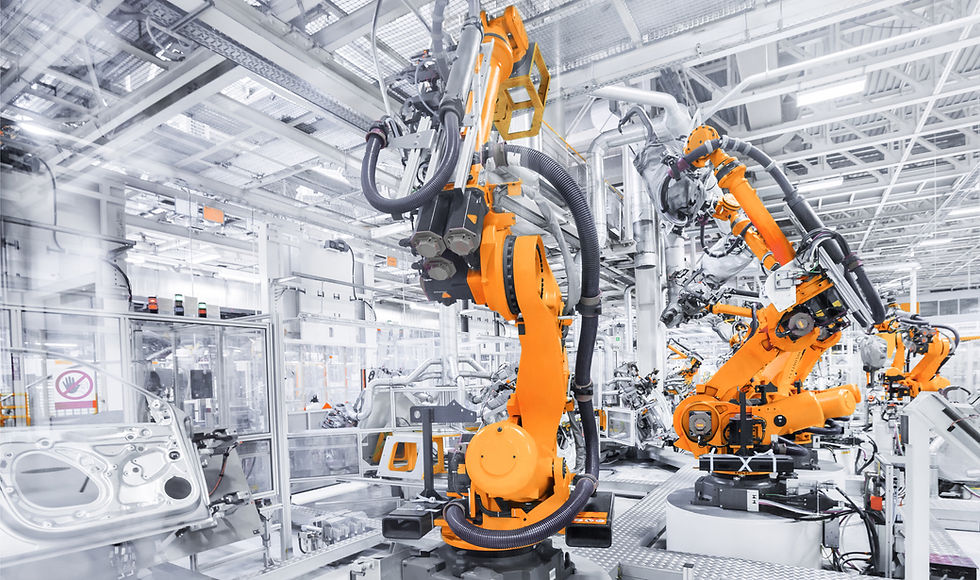WHAT IS MISSING IN PRINTED CIRCUIT BOARD DEVELOPMENT?
- prawin02
- Jun 22, 2020
- 3 min read
Updated: Mar 30, 2021
PCB stands for Printed circuit board. A PCB is a thin board made of composite epoxy fiberglass or other laminate material. different components are connected on the PCB they include: resistors, transistors, and integrated circuits. pcb are used in some electronic gadgets that we use on a daily basis that is: mobile phones and laptops .pcb serve as the foundation of many internal computer components for example: expansion cards, video cards, network interface cards, controller cards etc. Pcbs are used in other electronic devices such as radios, digital cameras, cellphones tablets and TVs. Pcbs in desktops, computers and other large electronic devices contain finer circuitry and are typically thinner.
Pcb design have significantly evolved over time, modern day PCB largely vary in complexity starting from single layer to complex pcb designs with as many as 20 to 30 layers with hidden vias and embedded components. its important to model pcb in active environment where it will be used. before modeling a pcb you should check on the following issues: the environmental envelope that should be supported, the expected temperature when operating at the boundary, thermal analysis available for the pcb temperature, whether the channel lengths are moderate
PCB design flow consists of four stages namely: part selection, schematic capture and simulation, board layout and board verification and validation. part selection stage evaluates and investigates how components coordinate with each other and work as a part of the overall design. schematic capture and simulation in this stage, spice simulation is utilized to predict circuit behavior checking the integrity of circuit designs and analyze the effects of signals and components upon the design.
It is important for us to understand that pcb layout is an important step in designing any electronic device since it determines the success and failure of a piece of equipment. Pcb design rules and production processes have evolved to achieve new layouts and capabilities.
Today pcbs are being used as connecting components in electronics, relaying messages between active components so the complete device can work. Engineers are working on active pcbs to reduce the number of components in the pcbs while maintaining functionality.
Augmented reality (AR) and virtual reality (VR) potential application in pcb design is to address issues like fitting electronic packages into unconventional shapes. they ensure that circuit connections work properly and reduce the time-consuming process of route and place.
In the near future, augmented pcbs will be used to reduce wastage of materials and cost in training methods.
‘’Much like integration of 3D into PCB design, AR is a solution to many problems of advanced technology,’’ Ben Jordan, senior manager product and persona marketing, Altium.
The high-density interconnect (HDI) boards are the fastest growing technologies since they have higher density circulatory today, however, designers can place more components on the two sides of the PCB.
The ever-changing technology in fabrication placement and soldering of SMT (service mount technology) electronic components have caused an increase in pcb defects in terms of types and numbers.
The elimination subtraction method calculates the pixel distance between the target image and the template image to detect obvious defects such as magnetic flux leakage, short circuit and open circuit.
(PCBs)are the brains of many devices. PCB is a little bit like a cake, it has layers of materials, plexiglass, epoxy, copper, gold and silver. The layers connect electrical components like capacitors and resistors into single components that can be used to do any job. PCB requires knowledge on how electronics work, hence it makes complex designs real.
Product design reduces the set-up of big machines to small machines for an example is the current thin PCB. Missing footprints on the PCB results in lack of electronic components hence reduced performance of electronic boards.
Conclusion.
When developing products, we consider the means of communication that work best. we check on the following quantity and qualities: range, availability of power, features needed to secure a device, cost and lastly accessibility. Businesses without experience in product development are struggling to keep up with the competition. Although the solution for this business is to engage a product development firm with electronics development expertise.




Comments